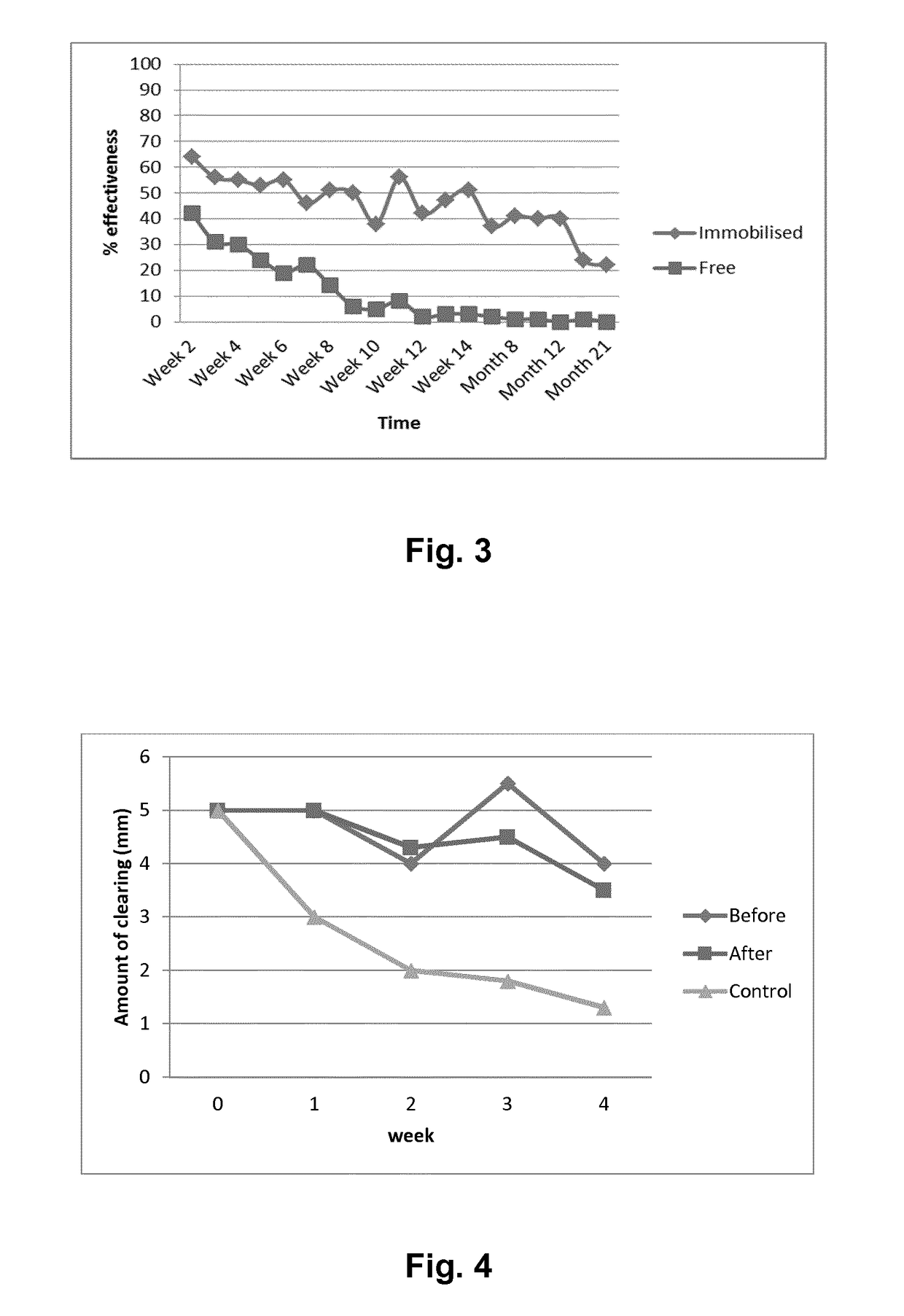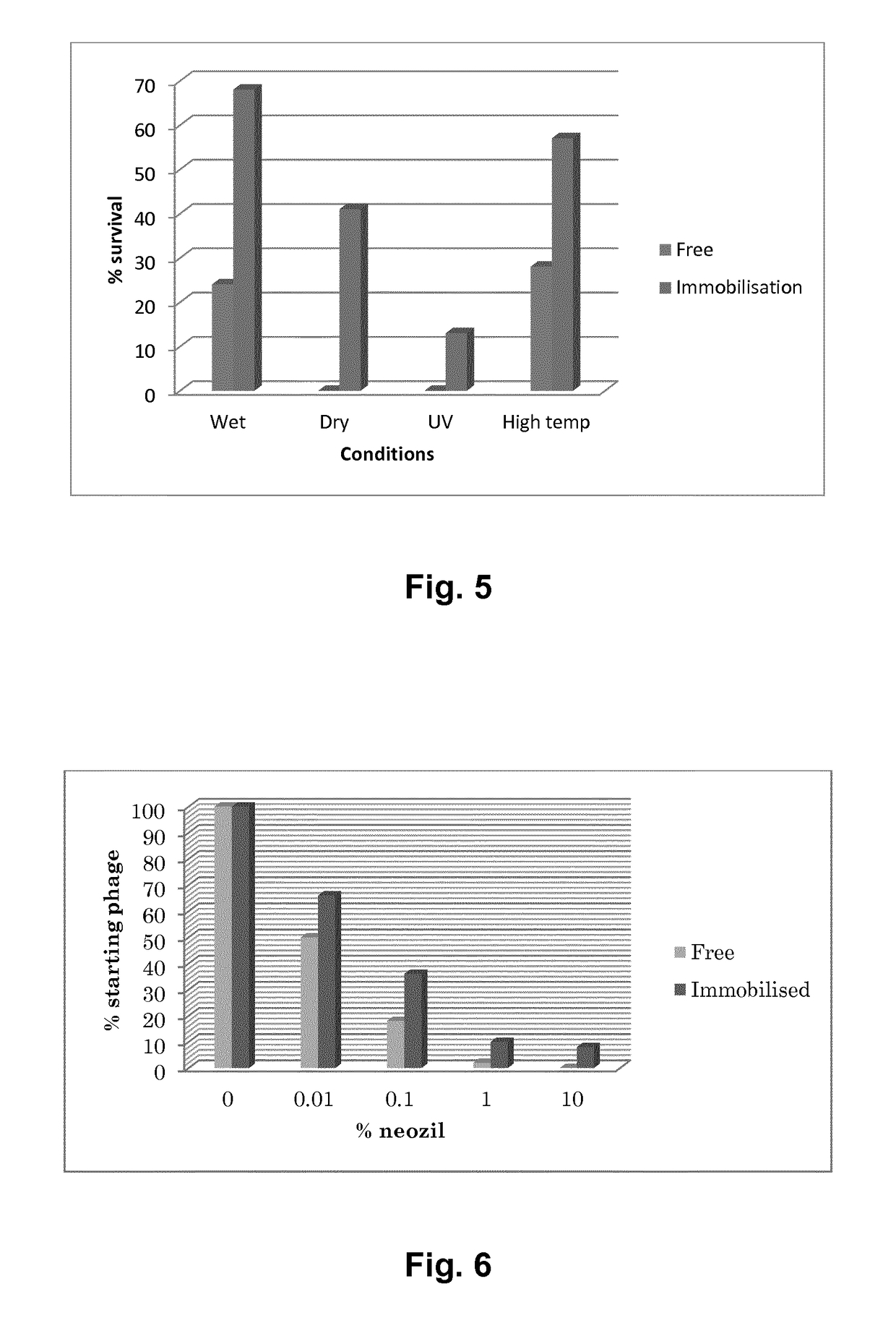Treatment of bacterial infections in aquaculture
- Summary
- Abstract
- Description
- Claims
- Application Information
AI Technical Summary
Benefits of technology
Problems solved by technology
Method used
Image
Examples
example 1
[0105]We tested bacteriophage covalently attached to both plastic (nylon) and carbohydrate (cellulose) particles to prove the feasibility of using compositions of the invention in aquaculture applications.
[0106]It was first determined whether bacteriophages immobilised on to cellulose powder survive longer than free bacteriophages in both sea water and fresh water. FIG. 1 shows the survival of immobilised and non-immobilised Bacteriophage ϕlin 24 in sea water. Bacteriophage ϕlin 24 immobilised on cellulose powder survived significantly longer than non-immobilised bacteriophages in sea water (P≤0.001).
[0107]Procedures
[0108]Media and Methods
[0109]Table 1—All media was made and methods were performed in accordance with the appropriate standard operating procedure (SOP).
TABLE 1Medium / MethodSOPNutrient AgarAgar 50Nutrient BrothBroth 51Immobilisation of phageImmobilisationCulture of bacteriaCulture
[0110]“Agar 50” SOP[0111]Weigh desired amount of powder[0112]Add powder to empty bottle of a...
example 2
[0242]The data shown in FIG. 2 demonstrate that immobilised bacteriophages were more resistant to UV exposure than free bacteriophages.
example 3
[0243]FIGS. 3 to 6 show stability under storage conditions of preparations comprising covalently attached bacteriophage under various conditions.
[0244]FIG. 3 shows the storage stability of Peptobacterium single phage immobilised onto cellulose. In this example the preparation was stored in liquid (PBS), at 4° C. in single-use aliquots.
[0245]FIG. 4 shows the storage stability of Peptobacterium single phage immobilised onto copolymer beads. In contrast to FIG. 3, above, the copolymer beads were stored at 4° C. in single-use aliquots but were stored under dry conditions.
[0246]FIG. 5 shows the relative degree of survival (i.e. stability) of free and immobilised bacteriophage when exposed to stress conditions. The stress conditions used are set out below:[0247]i. Wet—4 weeks at 4° C.[0248]ii. Dry—4 weeks at 4° C.[0249]iii. 30 seconds UV exposure[0250]iv. 1 minute at 85° C.
[0251]FIG. 6 shows the storage stability of free and immobilised bacteriophage potato stored in the presence of the p...
PUM
| Property | Measurement | Unit |
|---|---|---|
| Diameter | aaaaa | aaaaa |
| Volume | aaaaa | aaaaa |
| Volume | aaaaa | aaaaa |
Abstract
Description
Claims
Application Information
 Login to View More
Login to View More - R&D
- Intellectual Property
- Life Sciences
- Materials
- Tech Scout
- Unparalleled Data Quality
- Higher Quality Content
- 60% Fewer Hallucinations
Browse by: Latest US Patents, China's latest patents, Technical Efficacy Thesaurus, Application Domain, Technology Topic, Popular Technical Reports.
© 2025 PatSnap. All rights reserved.Legal|Privacy policy|Modern Slavery Act Transparency Statement|Sitemap|About US| Contact US: help@patsnap.com



